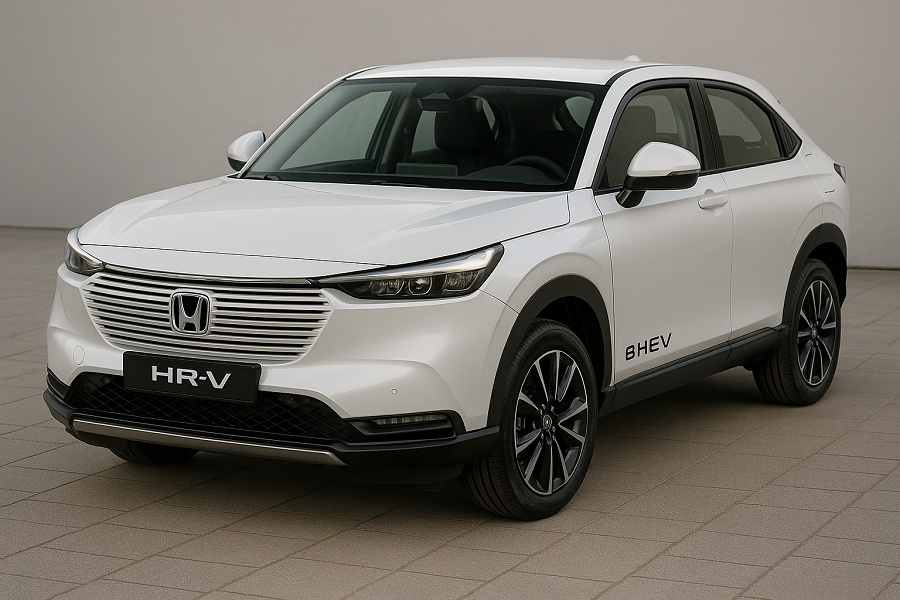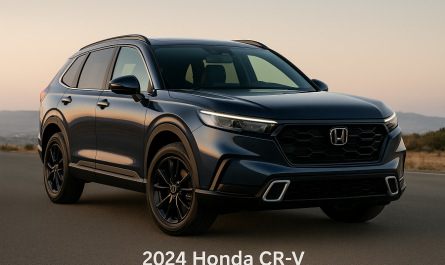Introduction
The Honda HR-V e:HEV, the hybrid variant of Honda’s popular subcompact SUV, combines sleek design, fuel-efficient technology, and practical features for urban and suburban drivers. With its global rollout continuing, the 2025 model brings refreshed styling and enhanced features, making it a compelling choice in the competitive small SUV market. This article dives into the release timeline, key specifications, and a detailed review of the HR-V e:HEV, offering insights for potential buyers.
Release Date
The third-generation Honda HR-V e:HEV was first unveiled in Japan on February 18, 2021, with sales commencing in April 2021 for the Japanese market (sold as the Vezel e:HEV). The global model, tailored for markets like Europe, Australia, and parts of Asia, began rolling out in 2022, with specific launch dates varying by region:
-
Europe: Available since late 2021, with the facelifted 2025 model launched in June 2025.
-
Australia: Launched on May 12, 2022, with the updated 2025 e:HEV X and e:HEV L models released in December 2024.
-
Pakistan: The HR-V e:HEV became available for test drives starting July 14, 2025, with bookings opening around the same time.
-
North America: Notably, the U.S. and Canada markets do not yet offer the HR-V e:HEV, sticking with a gasoline-only 2.0-liter engine for the 2025 model year. However, speculation suggests a hybrid variant could arrive by 2027 as Honda expands its electrified lineup.
The facelifted 2025 HR-V e:HEV, introduced globally in March 2024, brings updated styling and minor interior enhancements, with rollouts continuing into mid-2025 across various markets.
Review: Honda HR-V e:HEV 2025
Design and Styling
The 2025 Honda HR-V e:HEV sports a modern, minimalist aesthetic that aligns with Honda’s current design language. Its coupe-like roofline, body-colored grille, and full-width LED taillight bar give it a premium, urban-friendly look. The facelifted model introduces:
-
Updated Front Fascia: A redesigned honeycomb grille and slimmer LED headlights create a sharper, more aggressive stance.
-
New Exterior Colors: Options like Nordic Forest Pearl and Boost Blue Pearl add vibrancy.
-
18-Inch Alloy Wheels: Standard on higher trims like the e:HEV L, enhancing both style and handling.
At 4,345 mm long, 1,790 mm wide, and 1,590 mm tall, the HR-V e:HEV is compact yet feels substantial, with a 2,610 mm wheelbase ensuring a stable ride. The exterior’s clean lines and laser-brazed roofline contribute to a seamless, upscale appearance.
Powertrain and Performance
The HR-V e:HEV features Honda’s intelligent e:HEV hybrid system, combining a 1.5-liter Atkinson-cycle four-cylinder petrol engine with two electric motors. This setup delivers:
-
Total Output: 96 kW (129 hp) and 253 Nm of torque.
-
Transmission: An e-CVT that seamlessly switches between electric, hybrid, and engine-driven modes for optimal efficiency.
-
Fuel Economy: Up to 54.7 MPG (4.3 L/100 km) in combined cycles, though real-world tests have reported around 43.5–60 MPG depending on conditions.
The hybrid system excels in urban environments, gliding silently on electric power at low speeds. Transitions between electric and petrol modes are smooth, though the engine can get noisy under hard acceleration due to the CVT holding high revs. Performance is adequate rather than thrilling, with a 0–100 km/h time of around 9.5–10.6 seconds. Three drive modes—Eco, Normal, and Sport—allow drivers to tailor the experience, with Normal being the most balanced for daily use.
Interior and Comfort
The HR-V e:HEV’s cabin is a standout, blending simplicity with premium touches:
-
Spaciousness: Despite its compact size, the interior offers generous legroom, with 35 mm more rear knee room than its predecessor. However, headroom can be tight for taller rear passengers.
-
Magic Seats: Honda’s versatile Magic Seat system allows the rear seats to fold flat or flip up, offering flexible cargo solutions. Boot capacity is 304 liters with seats up and 1,274 liters with seats folded, though this is smaller than some rivals like the Toyota Corolla Cross.
-
Materials: The cabin features soft-touch surfaces, synthetic leather, and fabric upholstery (heated in higher trims), though some hard plastics remain.
-
Technology: A 9-inch touchscreen with wireless Apple CarPlay and wired Android Auto, a 7-inch digital instrument cluster, and Honda Connect for remote features like locking and fuel checks.
The air diffusion system, directing airflow along the roof, enhances comfort, while the heated steering wheel and seats add luxury in colder climates. However, the lack of wireless charging and electric seat adjustments in even top trims is a drawback.
Safety and Features
The HR-V e:HEV comes equipped with Honda Sensing, a suite of advanced driver-assistance systems, including:
-
Adaptive cruise control
-
Lane-keep assist
-
Traffic jam assist
-
Blind-spot monitoring (higher trims)
-
Rear cross-traffic alert
The 2025 facelift adds updated energy management and new safety features to the hybrid models. In markets like Australia, the HR-V is a four-seater, which may limit its appeal for families needing a fifth seat.
Driving Experience
The HR-V e:HEV is refined and comfortable for city driving, with precise steering and a smooth ride thanks to improved suspension and sound-deadening materials. It handles well in tight corners, but the 1.5-liter engine lacks the punch for spirited driving, making it better suited for leisurely commutes than dynamic performance.
Pricing and Trims
Pricing varies by market:
-
Australia: e:HEV X starts at AU$39,900 (~US$25,000), e:HEV L at AU$42,900 (~US$27,000).
-
UK: Starts around £30,935 for the base hybrid trim, up to £38,825 for top-spec models.
-
Pakistan: Estimated at 1.6–1.7 million PKR (~US$5,700–6,100) for the RS trim, though official pricing is pending.
Available trims typically include base, mid-tier (e.g., e:HEV X), and premium (e:HEV L), with higher trims offering extras like 18-inch wheels, heated seats, and advanced safety features.

Pros and Cons
Pros:
-
Excellent fuel economy (up to 60 MPG in real-world tests)
-
Spacious, flexible interior with Magic Seats
-
Premium styling and refined cabin
-
Comprehensive safety features
-
Smooth urban driving experience
Cons:
-
Noisy engine under hard acceleration
-
Smaller boot compared to rivals
-
Four-seater configuration in some markets (e.g., Australia)
-
Lacks some premium features like wireless charging
-
No hybrid option in North America (yet)
Comparison to Rivals
The HR-V e:HEV competes with hybrids like the Toyota Corolla Cross Hybrid, Hyundai Kona Hybrid, and Kia Niro Hybrid. While it offers superior fuel economy and a premium cabin, its smaller boot and four-seater layout (in some markets) put it at a disadvantage against rivals with larger cargo areas and five seats. The Toyota C-HR and Nissan Qashqai offer similar hybrid efficiency but more dynamic styling or additional features like wireless charging.
Conclusion
The 2025 Honda HR-V e:HEV is a stylish, fuel-efficient, and practical choice for buyers seeking a compact hybrid SUV. Its refined cabin, versatile Magic Seats, and excellent fuel economy make it ideal for urban commuters and small families. However, the noisy engine under load, limited boot space, and four-seater configuration in some markets may deter buyers needing more versatility. For those prioritizing efficiency and Honda’s reliability, the HR-V e:HEV is a strong contender, though it faces stiff competition from more feature-rich rivals.



